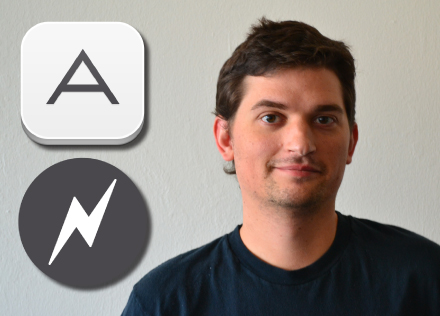
- Dalton Caldwell is CEO of app.net, which introduces a new app today allowing publishers to send alerts, called “Broadcasts,” to readers’ mobile phones.
“Imagine if you had to download a different email client for every email newsletter you subscribe to.” That’s the analogy offered by Dalton Caldwell, CEO of app.net, for the state of push notifications on mobile devices today.
News organizations want to reach readers on their mobile phones to alert them to breaking news or big features, but that requires push notifications, which in turn require apps. The result: If I want alerts from the New York Times, USA Today and the Chicago Sun-Times, I need to download three separate apps.
In Caldwell’s estimation, the ability to reach readers with push notifications accounts for 85 percent of the reason publishers enter the mobile-app space to begin with over settling for mobile-friendly websites. That’s why a new platform from app.net, launching today on iOS and Android, aims to make it easier for publishers to push stories to readers — and for readers to find out about them.
Here’s how it works: Publishers use app.net to create customized Broadcast Channels for readers to subscribe to. Then, publishers — news organizations themselves or individual journalists — compose alerts to be pushed to readers’ mobile devices. The alerts include a headline and link and can also include a brief message or photo.
If this sounds like a spammy marketing tool, keep in mind that readers will only receive alerts — app.net calls them Broadcasts — from channels to which they subscribe. Before subscribing, readers can see how often the channel pushes alerts, and app.net encourages publishers to limit themselves to fewer than one to two per day.
That’s a big departure from the status quo on sharing platforms like Twitter and Facebook, where Caldwell says “you’re incentivized to create a user experience of infobesity — the more push notifications you can send them, the better.” That amounts to a race to zero as those readers face information overload, Caldwell told Poynter via phone. “I understand why people are burnt out on push.”
Broadcast gives readers control over their push notifications, echoing the move by Breaking News this month to allow users to customize alert topics.
But whereas Breaking News is a publisher itself, Broadcast is a platform for publishers, from big media properties to individuals. Already signed up at launch are journalism.co.uk, a few New Yorker blogs, “The Big Picture” by the Boston Globe, and Kara Swisher of AllThingsD. (Broadcast is also geared to users like musicians who want to announce tour dates and creators of web comics who publish sporadically and want to let readers know when new content is available. It also offers utility-based channels like weather updates for every county in the U.S.)
“If you have something that’s inherently low-volume, say it’s long-form journalism, say you’re a podcaster, say you’re someone elite who blogs once per month — holy cow, people are going to miss my news, they’re going to miss what I have to say,” Caldwell explained. That’s where Broadcast steps in — what if you could only see the best tweet or two per day from only your favorite writers or news sources? And what if they could be pushed directly to your device in real time?
It’s a free service, Caldwell said, with potential for monetization down the line when power users want access to advanced analytics. The Broadcast API will allow a newsroom developer to add the alerts system to its CMS, and it’ll also be integrated into Hootsuite in an effort to keep news organizations’ social workflows streamlined.
Could Broadcast be app.net’s breakout app? It depends on how quickly it can corral a large base of users on the publishing side — and it could also depend on whether Twitter and Facebook make moves toward selective push notifications, too. The company’s relationship with media properties from earlier apps has facilitated some significant early gets, like Swisher of AllThingsD, whose scoops Caldwell says are appealing to readers who want to know about her stories fast but don’t want to risk a tweet dropping off their timelines before they can see it.
More immediate than email and more selective than Twitter — that’s where app.net is placing its bets.







